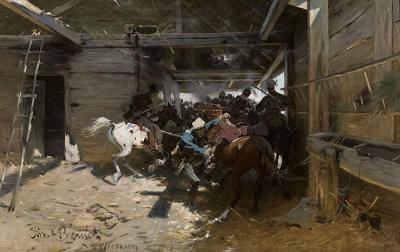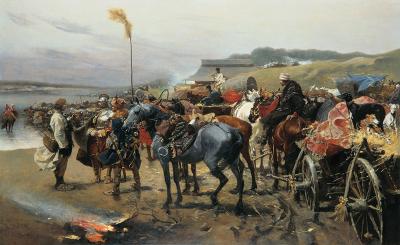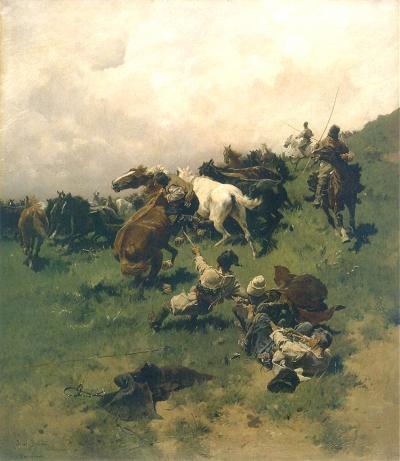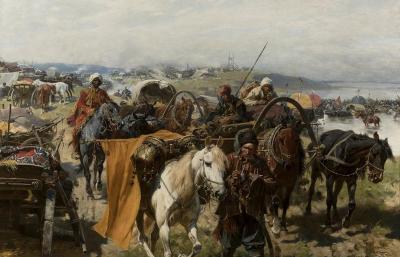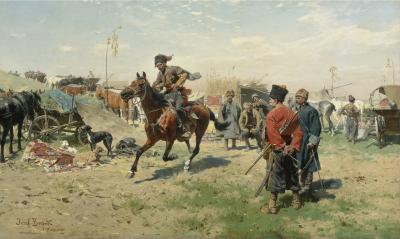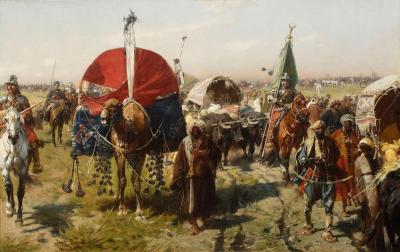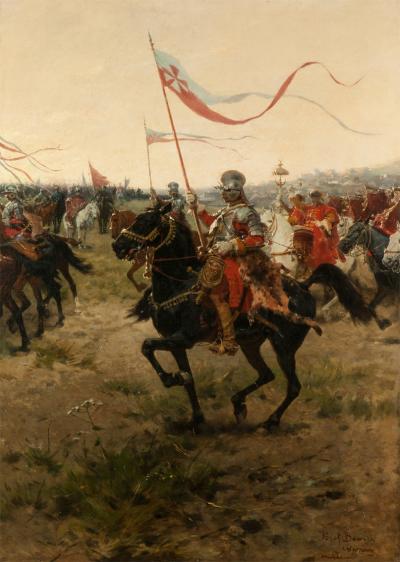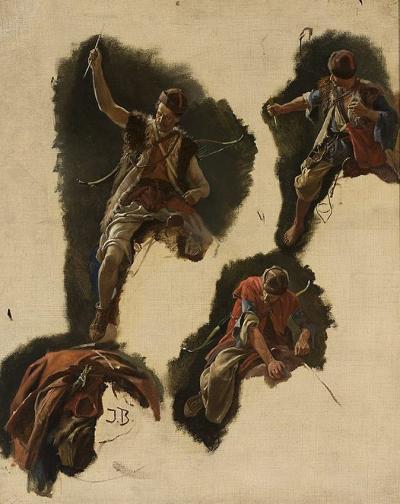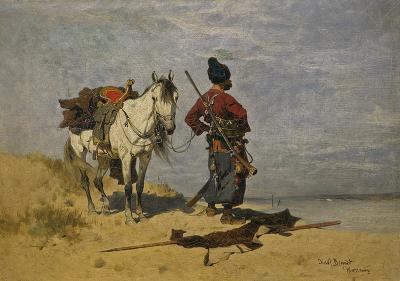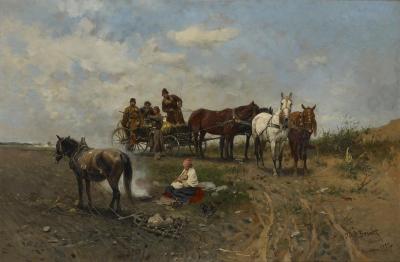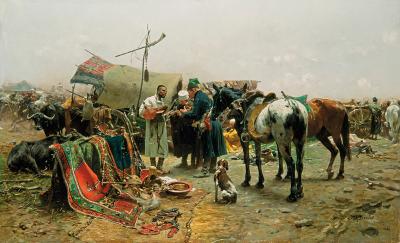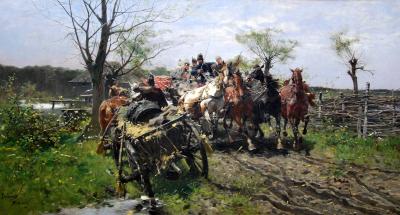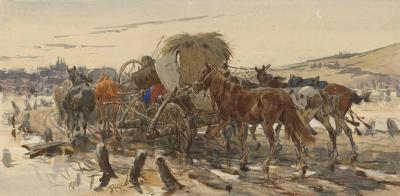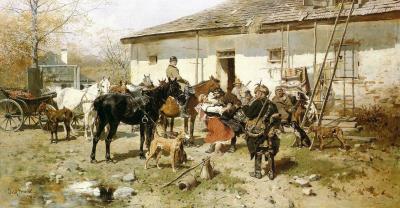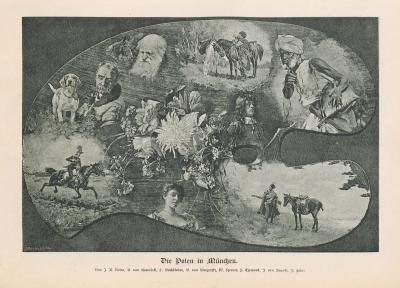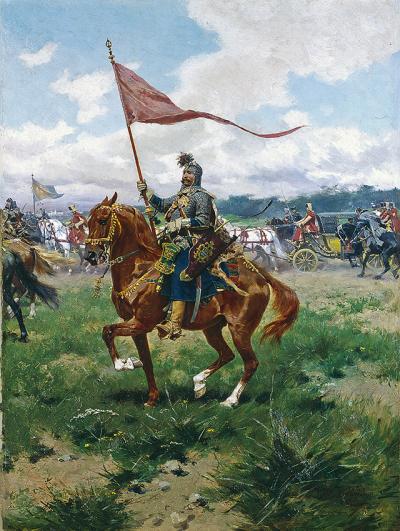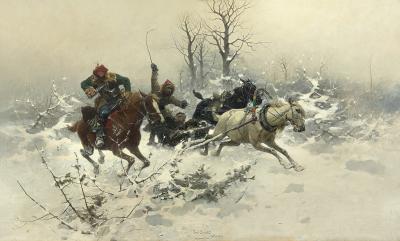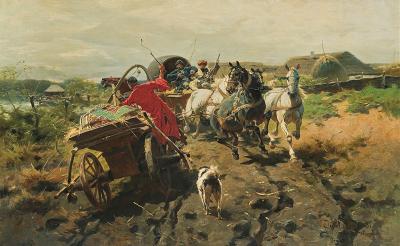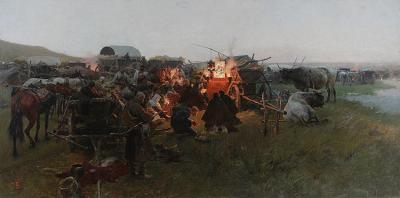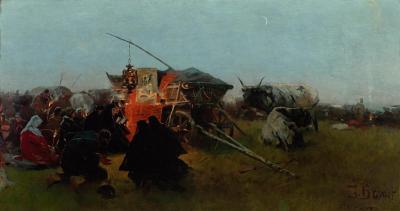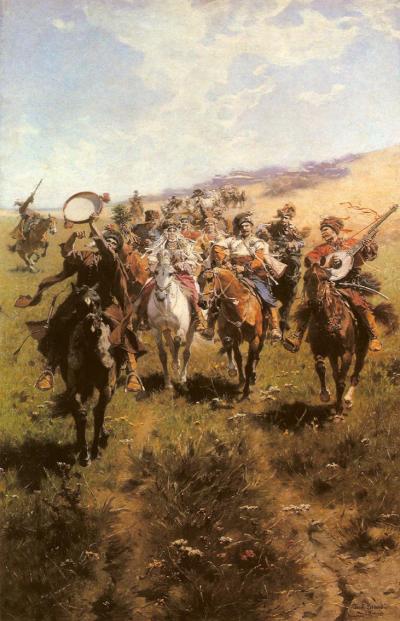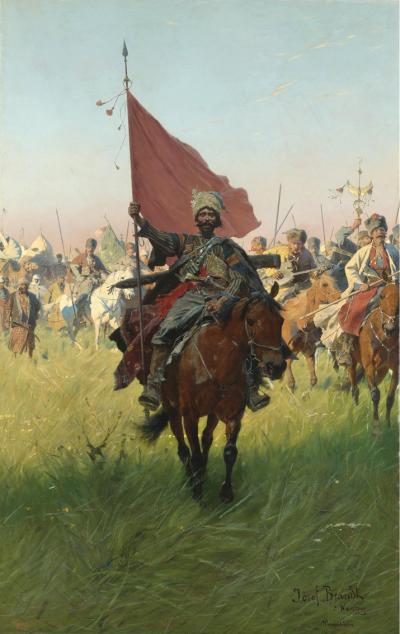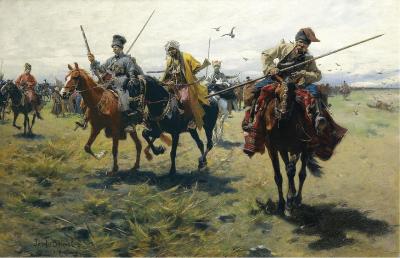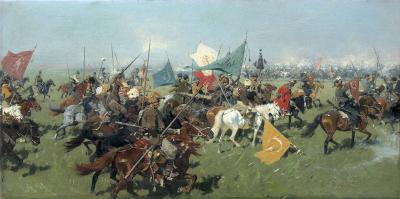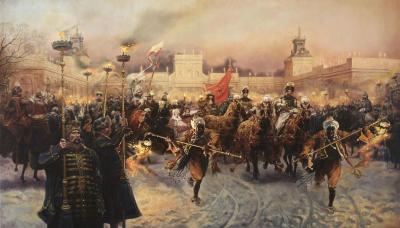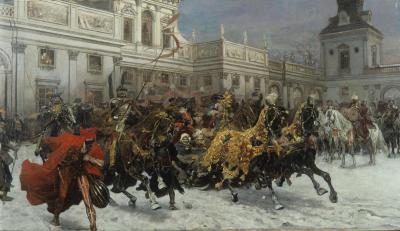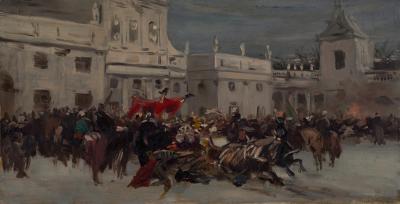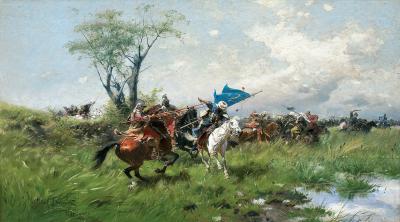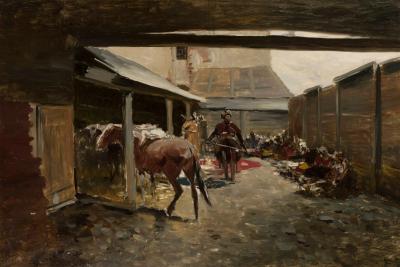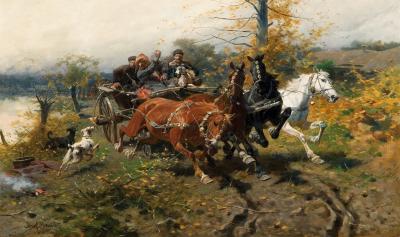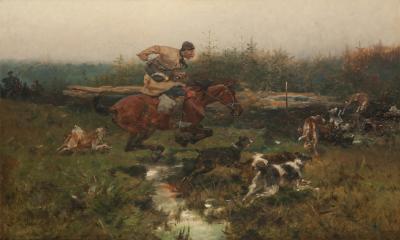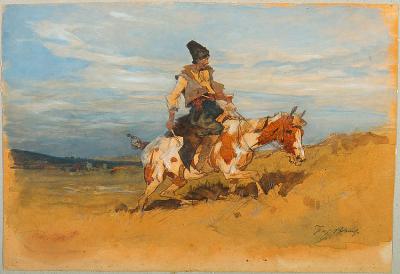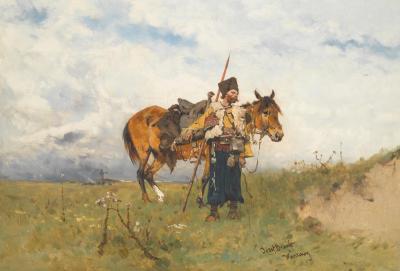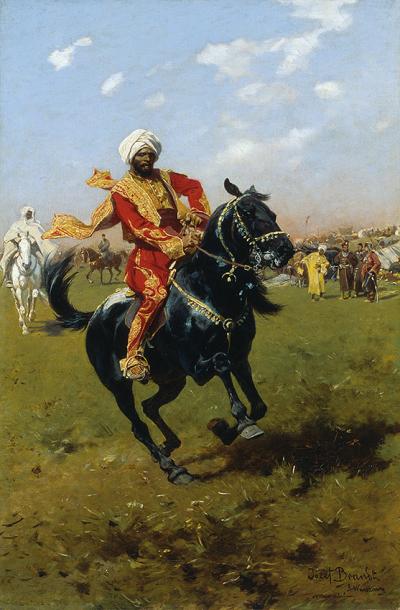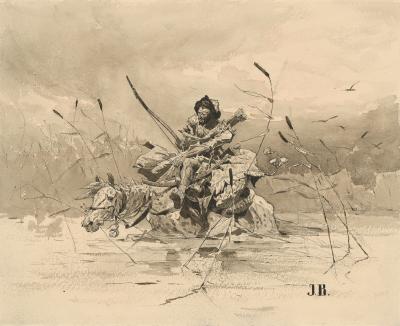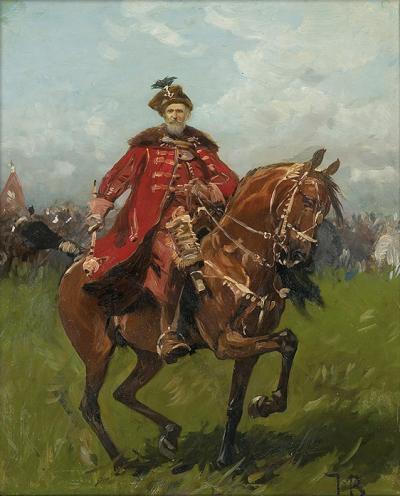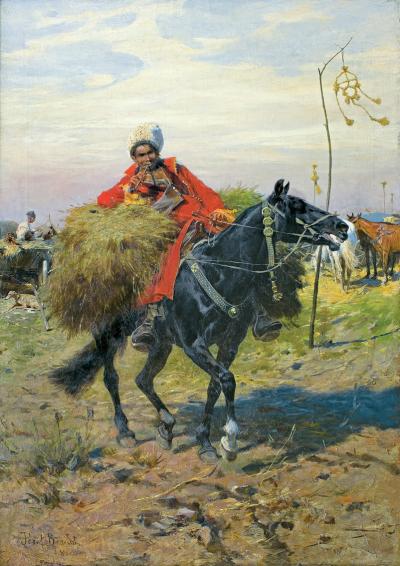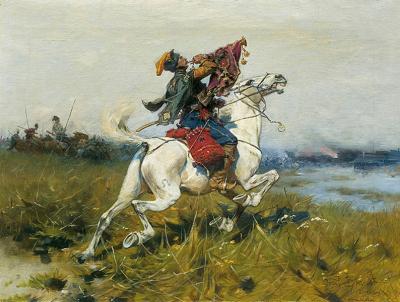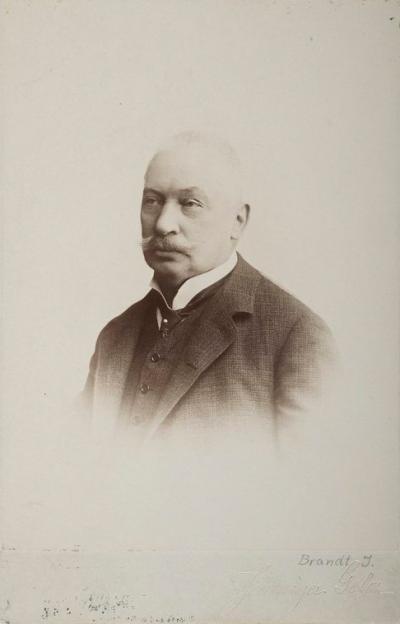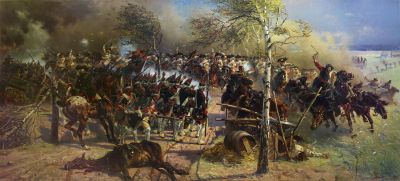Józef Brandt
Mediathek Sorted

In his genre pictures, Brandt reintroduced into his repertoire hunting scenes which also reflected folk life in the Ukraine (fig. 35,39), but in which he also incorporated his own experiences (fig. 56). In his "Market in Białka" (1885, fig. 36), which might refer to different places in Ukraine (Belka, Bilka, Belika), the viewer is confronted with a rural market in the steppe, where an Oriental trader is offering a saddle selected from a number of colourful carpets, shoes, musical instruments and bowls lying on the ground. Two tradesmen who have arrived on horseback are scrutinising his tableware with interest. A narrative and simultaneously dramatic motif that reoccurs on several occasions is the confrontation between two teams of horses on a bridge (1886, fig. 37) or a dyke (1890, fig. 43), whereby a carriage with several horses driving at speed in the opposite direction is recklessly forcing a peasant's wagon carriage into an embankment beside the river. These also include individual studies (fig. 38) and pictures with only a single “Horse and Cart in Flight” (circa 1900, fig. 55). A large-format "Cossack wedding" on horseback with singing and riders making music (1893, fig. 46) has a folklore character. It was painted at the same time as the corresponding military pictures.
In the 1890s Brandt started to paint wall-filling historical paintings once again. At the beginning of the decade, he painted a picture of "Our Lady of Poczajów" (circa 1890, fig. 44, 45), formerly also known as "The Prayer" or "Our Lady of Armenia". It depicted the faithful in the Ukrainian steppe engaged in evening or morning prayer in front of an image of Our Lady hung on a wagon and illuminated by a lantern. It is said that the icon of the Blessed Mother from the monastery of the Assumption in Poczajów - it originated at the end of the 16th century – was temporarily located in the Armenian cathedral at Kamieniec Podolski, to which it was later returned. Legend has it that it saved the monastery at Poczajów from a siege by Ottoman troops. Here Brandt proves to be an important colourist, who not only characterises the figures and the scene with his sophisticated lighting, but also the natural surroundings. This is also the case with his monumental painting "The Departure of John III. and Marysieńka Sobieska from Wilanów" (1897, fig. 50), which shows the Polish royal couple John III Sobieski (1629-1696) and Maria Kazimiera Sobieska (née de la Grange d' Arquien, 1641-1716), called Marysieńka, illuminated by torches and lanterns, on their departure in a horse-drawn sleigh from the Warsaw Palace in Wilanów. The painting was exhibited at the VII. International Art Exhibition in the Munich Glaspalast in the year it was created, and received favourable reviews from the critics: “J. v. Brandt's magnificent "royal sleigh journey' looks all the more credible because all the characters from King Sobieski to the least significant satellite are so genuinely Polish that one cannot fail to believe in them".[64] A further four-meter-wide version of this motif (fig. 51), for which there is a preliminary study in the Munich Lenbachhaus (fig. 52), was painted in a more summary fashion and lacks the dramatic lighting effects.
[64] Die Kunst für alle. Malerei, Plastik, Graphik, Architektur, volume 12, 1896-1897, page 336; Digital version: http://digi.ub.uni-heidelberg.de/diglit/kfa1896_1897/0420; twin paged illustration, page 132; Digital version: http://digi.ub.uni-heidelberg.de/diglit/kfa1896_1897/0418 (both called up on 25.11.2017)


















































































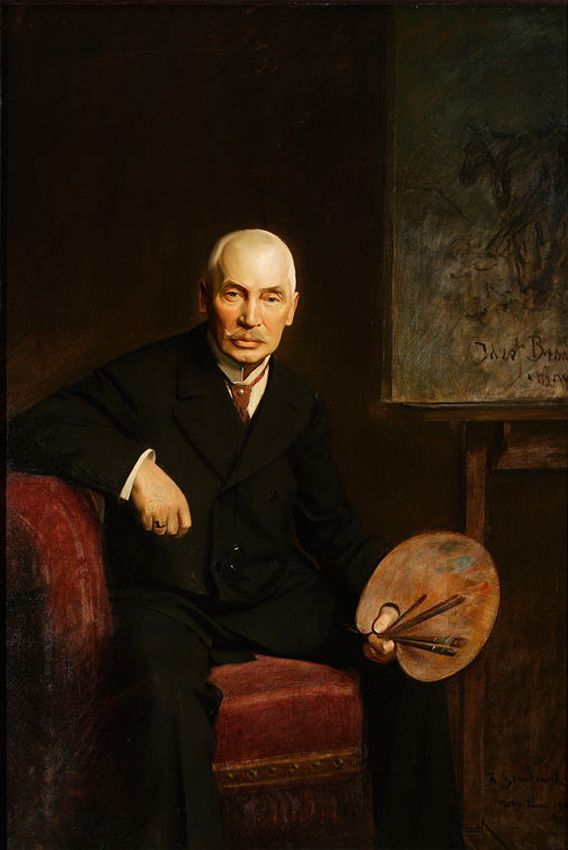
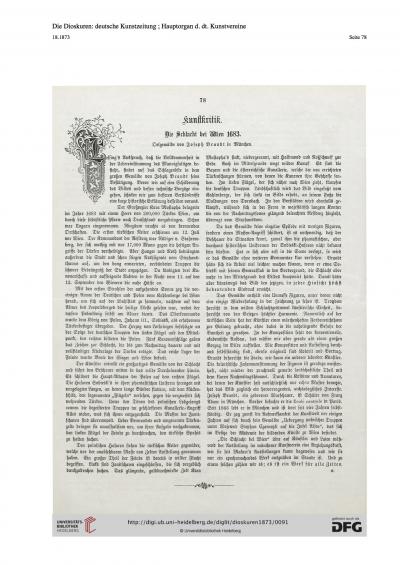
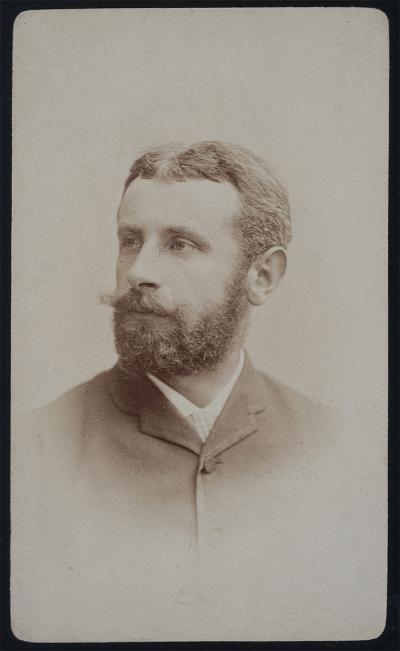
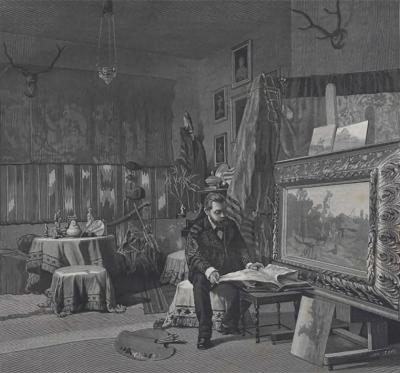
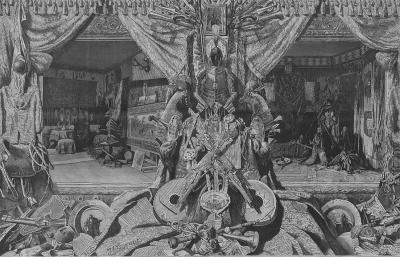
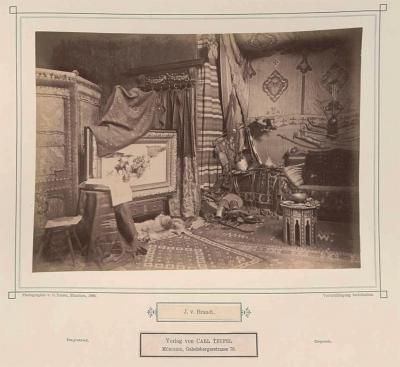
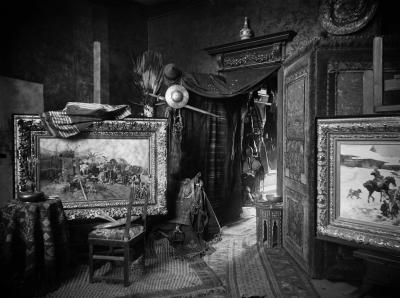
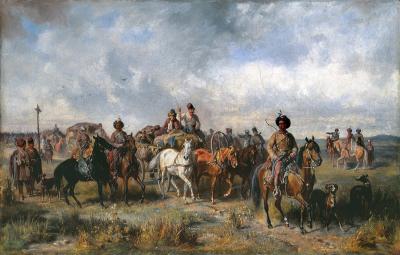
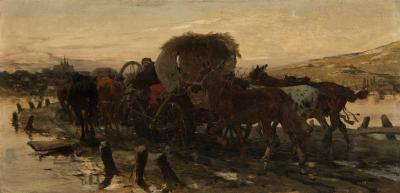
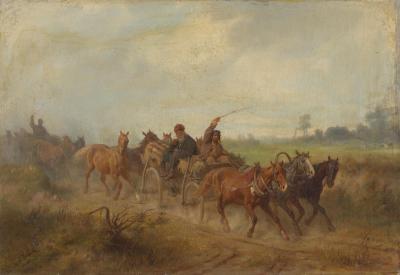
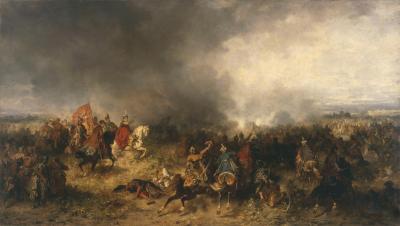
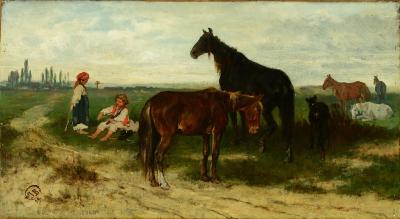
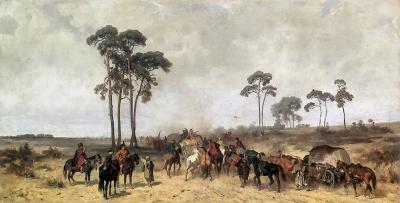
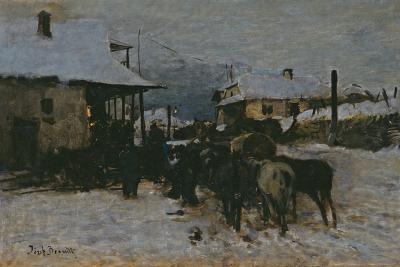
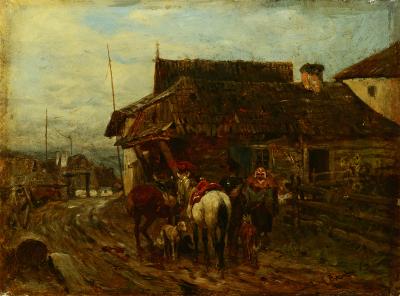
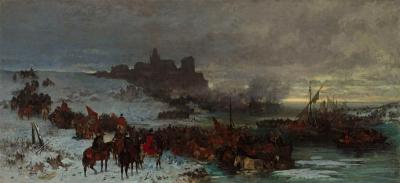
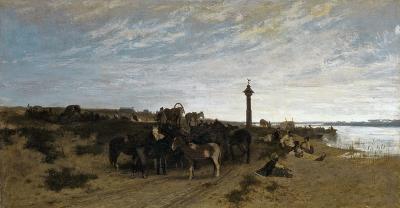
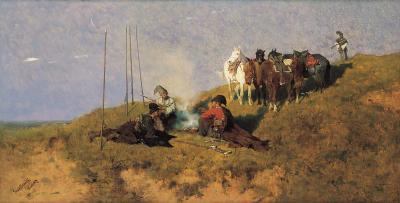
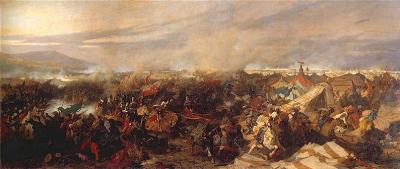
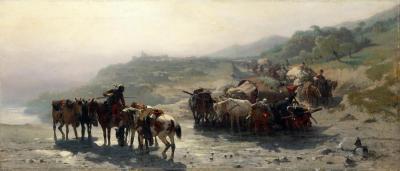
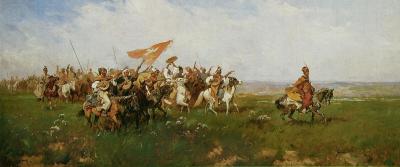
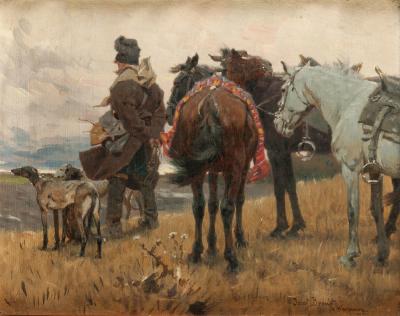
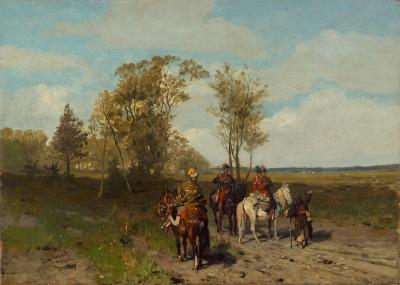
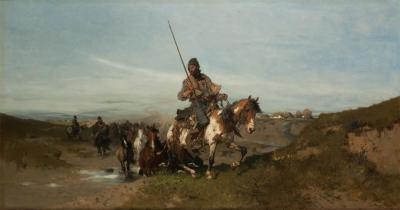
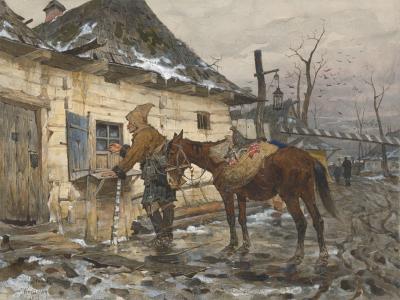
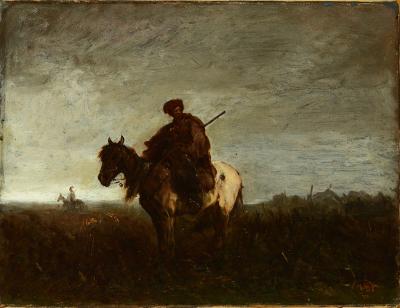
![Fig. 25: The Liberation of Prisoners, 1878 Fig. 25: The Liberation of Prisoners, 1878 - The Liberation of Prisoners [from the hands of Tatars], 1878. Oil on canvas, 179 x 445 cm, National Museum Warsaw/Muzeum Narodowe w Warszawie](/sites/default/files/styles/width_100_tiles/public/assets/images/25_befreiung_der_gefangenen_1878_mnw_cyf.jpg?itok=i5_t7XqM)
